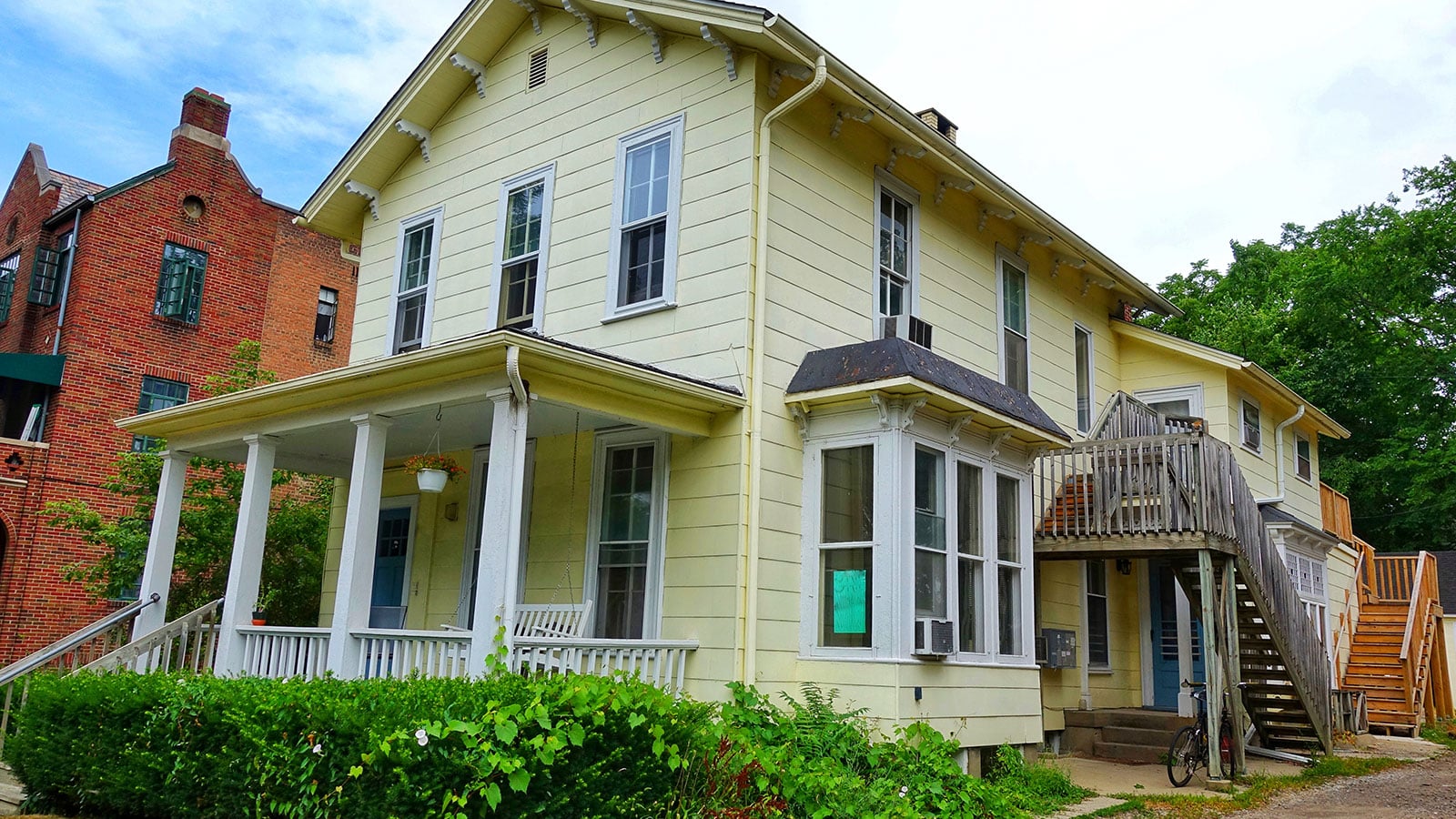Owning a house with a white picket fence was once the big dream for many in America. But for kids today, this might sound like something from a movie. Why did things change? A big part of the answer lies in the choices and luck of the Baby Boomers. Let’s explore how they had a very different experience with housing.
The Housing Market Explosion

As Baby Boomers entered their prime home-buying years, the demand for housing surged, leading to skyrocketing property prices. This rise wasn’t solely due to economic growth; it was also influenced by various socio-economic factors and policies of the time. For many younger generations, this has resulted in unattainable homeownership dreams. Affordable housing became a relic of the past.
Suburbia’s Golden Age

Suburban neighborhoods flourished during the Boomer years. As these communities grew, so did property values, leaving a legacy of pricier homes. This suburban expansion created a divide between urban and suburban living costs. Today’s youth find themselves paying premiums for homes their parents bought at fractions of the price.
The Student Debt Dilemma

While Boomers enjoyed affordable education, subsequent generations have grappled with ballooning student loans. This mounting debt has made saving for a down payment on a house nearly impossible for many. As the Boomers enjoyed the equity from their homes, the younger crowd struggled to step onto the property ladder.
Tax Policies and Homeownership

Tax policies historically favored homeowners, especially during the Boomer era. These incentives often made it more appealing to buy than to rent. However, as the cost of entry into homeownership grew, younger generations couldn’t capitalize on these benefits. Tax breaks became another advantage that largely served the Boomer population.
Zoning Laws and Property Restrictions

Boomers benefited from relaxed zoning laws, allowing for rapid expansion and development. However, as they settled, many supported more restrictive zoning, limiting housing development. The decreased housing supply further inflated prices, making homes less accessible to younger potential buyers.
The Renting Revolution

Unable to buy, many younger individuals turned to renting. However, as demand for rental properties surged, so did rental prices. With Boomers often acting as landlords, they reaped the financial benefits of this shift, further widening the wealth gap.
Retirement and Second Homes

With increased prosperity, many Boomers began purchasing second homes for vacation or investment purposes. This additional demand tightened housing markets even more. Secondary property ownership further limited available housing stock for new homeowners.
Housing as an Investment, Not a Home

Boomers were the first generation to see homes not just as places to live but also as investments. This shift in perspective played a role in driving up prices and making the housing market more competitive. The sentiment of a house being a pathway to wealth changed the dynamics of the real estate game.
The Mortgage Landscape

Innovations in mortgage products during the Boomer era allowed many to buy homes with little money down. While this increased homeownership rates, it also set precedents for borrowing practices. In contrast, stricter lending standards now pose challenges for younger would-be homeowners.
The Decline of Public Housing

The emphasis on private homeownership overshadowed the importance of public housing during the Boomer age. As they thrived, investment in public housing dwindled. This neglect left subsequent generations with fewer affordable housing options.
Gentrification and Urban Renewal

Boomers witnessed the rise of gentrification in many cities. What was once affordable housing in urban areas became upscale residences, pushing out long-time residents. This process has made many urban areas prohibitively expensive for the young workforce.
The Silent Role of Interest Rates

Historically low-interest rates during parts of the Boomer era made borrowing cheaper. This was yet another advantage that this generation had in acquiring homes. Today’s fluctuating rates present another uncertainty for potential young buyers.
Dwindling New Developments

Housing developments have not kept pace with population growth. While Boomers had their pick of new homes in burgeoning neighborhoods, today’s youth face limited choices. The scarcity of new homes continues to drive up prices.
The Economic Disparities

The wage growth during much of the Boomer’s working years hasn’t been mirrored in subsequent generations. While the cost of living, especially housing, has risen dramatically, incomes for younger individuals have not kept pace. This economic disparity has further widened the homeownership gap.
Bigger Houses, Bigger Prices

Boomers, enjoying prosperity, often opted for larger homes. This demand for bigger homes drove up average house sizes and prices. For today’s buyers, this means paying more for space they might not even need.
The Environmental Costs

Sprawling developments during the Boomer age led to increased environmental challenges. Land and resource consumption for these homes had lasting impacts. For the younger generation, this translates to a need for sustainable housing, which can come at a premium.
Financial Crises and Their Fallout

While Boomers faced their share of financial downturns, they also reaped the rebounds. However, the aftermath of the 2008 crisis left scars on the housing market, with younger generations feeling the brunt of its long-term effects.
The Legacy of a Housing Dream

The American dream of homeownership, once attainable for Boomers, now feels distant for many. The factors that once favored the older generation have morphed into challenges for the young. The dream, while not dead, has certainly evolved.
From cheaper houses to bigger opportunities, the Baby Boomers had a lot going for them. But that doesn’t mean the dream of having a home is gone forever for younger people. We just have to think differently, be creative, and keep pushing for a world where everyone gets a fair chance.
16 UNACCEPTABLE THINGS BOOMERS GOT AWAY WITH IN THEIR YOUTH THAT WOULD SPARK OUTRAGE TODAY

Looking back on the childhood of the boomer generation, it becomes evident that certain things once considered appropriate would never pass today’s standards. The cultural landscape has evolved significantly, leading us to recognize 16 aspects of their upbringing that would be deemed wholly unacceptable today. From unsupervised outdoor adventures to unfiltered television content, the boomer generation got away with various experiences that would undoubtedly raise eyebrows in today’s world. Let’s delve into these intriguing elements of their upbringing and reflect on how far society has come.
16 UNACCEPTABLE THINGS BOOMERS GOT AWAY WITH IN THEIR YOUTH THAT WOULD SPARK OUTRAGE TODAY
AUTOMOTIVE MONSTROSITIES: THE 10 CARS THAT PROVOKE BOOMER WRATH UNLIKE ANY OTHER

There’s no age quite like the Baby Boomers. Born between 1946 and 1964, this group has witnessed some of the most transformative periods in automotive history. They saw the rise and fall of the muscle car era, the oil crisis of the ’70s that led to a change towards smaller and more fuel-efficient cars, and the technological leaps of the 21st century that introduced a new era of hybrid and electric cars. Yet, not every car model has managed to win their hearts. In fact, some have attracted quite the opposite reaction. From design tragedies to mechanical misfits, here are the car models that achieved the questionable honor of being the most hated by the Boomers. Buckle up as we take a reflective yet bumpy ride down memory lane.
AUTOMOTIVE MONSTROSITIES: THE 10 CARS THAT PROVOKE BOOMER WRATH UNLIKE ANY OTHER
IT’S TIME TO LET GO: 30 OUTDATED BOOMER HOME TRENDS THAT DESPERATELY NEED TO BE SHOWN THE EXIT!

With the advances of social media, home trends, décor, and fads change faster than ever before. While some trends become instant classics, others can be redundant, unsensible, or just downright hideous. In a popular online forum, users shared the home fads they’re tired of seeing. We’ve compiled a list of these most disliked home décor fads, so grab a cup of coffee, and let’s look into these less-than-inspiring home design options!
IT’S TIME TO LET GO: 30 OUTDATED BOOMER HOME TRENDS THAT DESPERATELY NEED TO BE SHOWN THE EXIT!
BOOMERS FED UP: THE NEVER-ENDING SAGA OF MILLENNIAL BLAME FOR FINANCIAL FAILURES – ENOUGH IS ENOUGH!

Millennials look at their current economic situation with despair. The feeling amongst them is that the boomers are the cause of their woes. Boomers are considered to be a group of individuals who are self-serving, greedy, and short-sighted. But is this the case?
BOOMERS FED UP: THE NEVER-ENDING SAGA OF MILLENNIAL BLAME FOR FINANCIAL FAILURES – ENOUGH IS ENOUGH!













